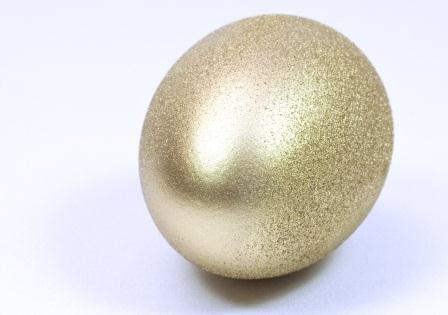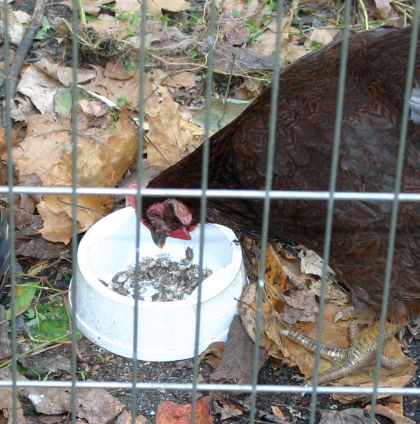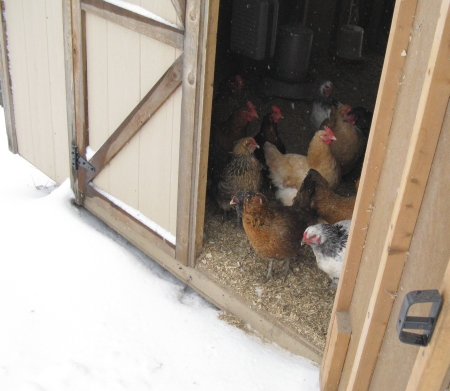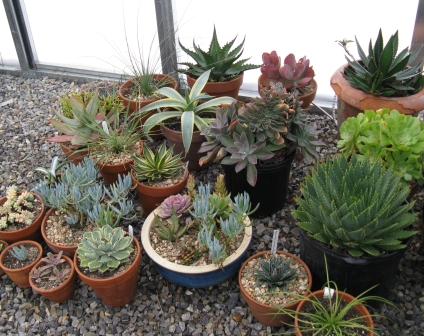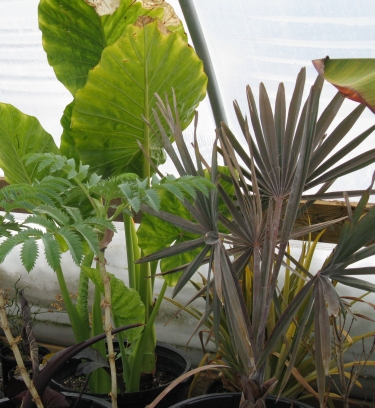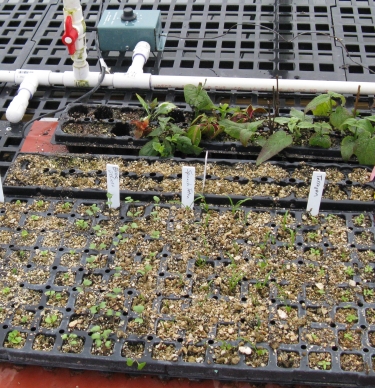File this under “if it’s not one thing, it’s another.”
Which may be, upon further reflection, the most profoundly absurd statement ever when it comes to gardening. It’s nature! Of course there’s always something!
Here in the Blue Ridge mountains of Virginia, we’ve had insect pests come and go, with each summer featuring something different.
Two years ago? Chewing up everything in the vegetable garden plus lots of perennials… Blister beetles!
Last year we had record rainfall, which brought out the gnats in gnumbers we’d never seen before. While not plant pests, they managed to take a lot of the fun out of gardening, hell-bent on clogging every facial orifice and nibbling on exposed flesh. Then the stinkbugs came. And stayed all winter long, keeping us company in the house.
This season goes down as the summer of Popillia japonica, the Japanese Beetle. Holy cow. I’m no entomologist (let’s ask Dr. Jeff!) so I can’t speak to how we got to this lowly place. But in any gathering of two or more local gardeners, The Beetle Issue will come up immediately.

There’s a ton of literature out there on life cycle, control, etc. They are a noted pest of turf, as the larvae munch away at the roots before emerging in early summer. I am not personally familiar with that aspect, as we don’t really have turf at our house; it’s a mix of white clover, orchard grass, broadleaf weeds, and some kind of fescue that that still make a decent green substance when mowed to 3.25″ (and viewed from a distance). If I come across grubs while pulling weeds or planting, I’ll call over a couple of hens to take care of business. Biological controls such as spores of bacterial Milky Disease and insect parasitic nematodes have been only marginally successful.
For adult control, the debate continue regarding the efficacy (and wisdom) of traps baited with floral or pheromone lures. “Hey there, neighbor! Mind if your Japanese Beetles come over to my place?” Most of the pesticides recommended in the literature are broad spectrum (pyrethroids, carbaryl, etc.) so, heck no on that count. Hand-picking them into a cup or bucket of soapy water to die a bubbly, fragrant death is an option for a small garden (and extremely patient gardener). Note chickens also enjoy the crunchy outer coating and creamy center; spiny, thrashing legs and all.
Back to our regional plight – they attacked the usual suspects – favoring anything in the Rosaceae family including brambles,apple, etc. Any kind of Hibiscus now looks like a lace doily. Veggies were indiscriminately perforated – the beans were especially hard-hit. All that beetle poop is especially unappetizing on chard. A big surprise was the Japanese or Fall-blooming Anemone. They took mine down to the stem. I am currently enjoying flowers on a stick.

Both the Anemone and I will live, of course. But here’s the thing. One of the mantras that got us all through one of the coldest winters on record was “At least the bugs won’t be as bad this summer!” Ha, ha! If it’s not one thing, it’s another! Aargh.
